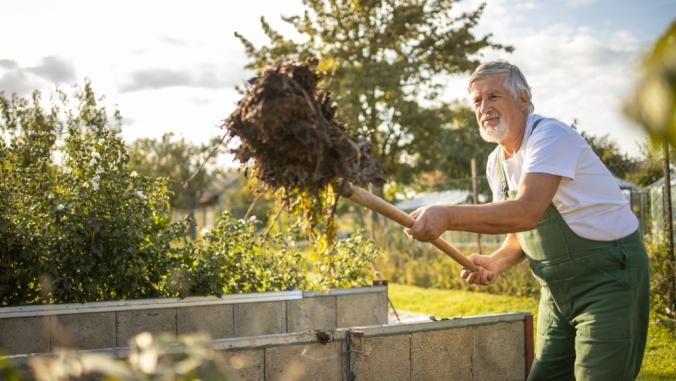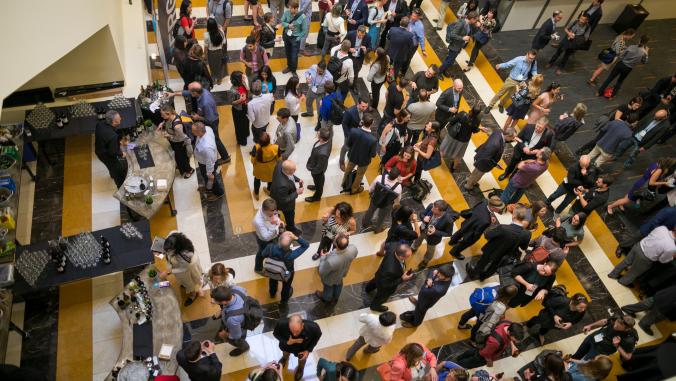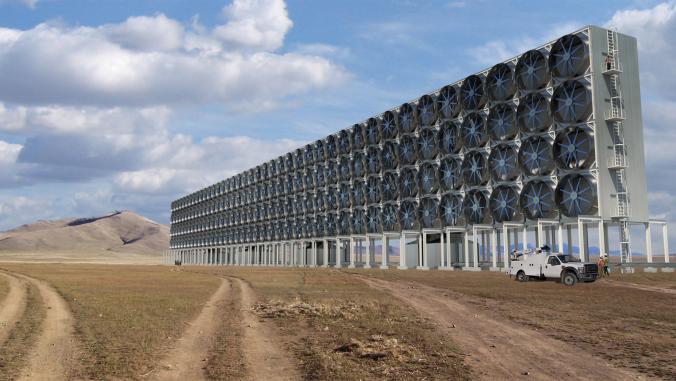Wind energy goes big in Texas
Renewable wind energy is responsible for over 22,000 jobs, $60 million in land lease payments and more than 12 percent of electricity in Texas.

Check out any old Western movie and you’re bound to see tumbleweeds rolling across the open prairie. One thing we learned from those old films is that beside cowboys and Indians, outlaws and sheriffs, two other things that Texas had, and still has a lot of, is open space and wind.
The open space gave rise to a booming cattle ranching industry long ago, although it has been suffering recently from a drought that has cost farmers and ranchers billions. The move to exploit the state’s abundant wind resource came more recently.
They did that through the construction of massive wind farms. We tend to associate renewable power with liberals and environmentalists, not something you’d expect to see a lot of in oil- and gas-rich Texas. But it happened anyway. It didn’t just happen, of course. Strong state government incentives somehow survived administration changes that went from liberal Ann Richards to conservatives such as George W. Bush and Rick Perry. It’s a model that few other states have followed, although many more could benefit from.
In fact, it’s the drought — which scientists agree is at least indirectly caused by climate change (because warmer temperatures increase the likelihood of drought) — that, having brought those farmers and ranchers to the brink of disaster, also has led to their enthusiastic embrace of wind power. Many farmers say it's the only way they've been able to hold onto their land.
"We rarely talked about the environment," recalled Michael Osborne, co-founder of the Texas Renewable Energy Industries Alliance and developer of the state’s first wind farm in the early 1990s. "We talked about farmers and ranchers getting rich on windmills."
The regular income generated by wind turbines keeps the lights on in ranchers’ homes, regardless of how their herds might be faring. Annual land lease payments last year, which went mostly to farmers and ranchers, were in excess of $60 million.
The regular income generated by wind turbines keeps the lights on in ranchers’ homes, regardless of how their herds might be faring.
According to the U.S. Energy Information Association, Texas has six of the 10 largest wind farms in the nation. The largest, some 220 miles west of Dallas, is the Roscoe Wind Farm, which also happens to be the largest in the world. It consists of 627 turbines, spread across 100,000 acres that produce 781.5 MW. That’s enough electricity to power 265,000 homes.
But Roscoe is one of many wind farms. Altogether, 11,592 wind turbines currently are installed (likely more by the time you read this) in Texas with a combined capacity of 20,321 MW. In the year ending in October, wind power was responsible for 12.68 percent of the total electricity production in the state. That’s a record.
It’s been a great thing for the state’s economy (PDF). Wind has been responsible for over 22,000 jobs (including 40 manufacturing facilities), a total capital investment of $38.4 billion. The fact that Texas has its own independent power grid that it has invested heavily in is also a key factor.
In the town of Sweetwater, home to four of the state’s largest wind farms, the tax base has grown from $400 million to $3 billion since 2000, a time when not a lot else was growing.
Ron Wetsel is a Sweetwater attorney and fourth generation resident of the town. He told The Guardian, "Wind is where oil and gas was in Texas in about 1914, 1920. No laws have really yet been created, there’s no regulation, there’s no governmental agencies, it’s just the wild frontier. All of a sudden, Sweetwater’s the wind capital of the world."
Republican ranchers may not care that much about 28.3 million metric tons of CO2 emissions avoided, but they likely will appreciate the 14.7 billion gallons of water saved. That’s water that their cattle, rather than thirsty natural gas power plants, get to drink.
So it is not without irony, that at this moment in our nation’s history, when we are just about as divided as we’ve ever been (with the possible exception of the Civil War), that a deeply red state such as Texas, a state that depends heavily on oil and gas and therefore could see renewable energy as an economic threat, would take such a leading role in wind.
Perhaps, to borrow a line from Paul Simon, it’s Texas, rather than Joe DiMaggio, that our nation should turn its lonely eyes toward.
This story first appeared on:





